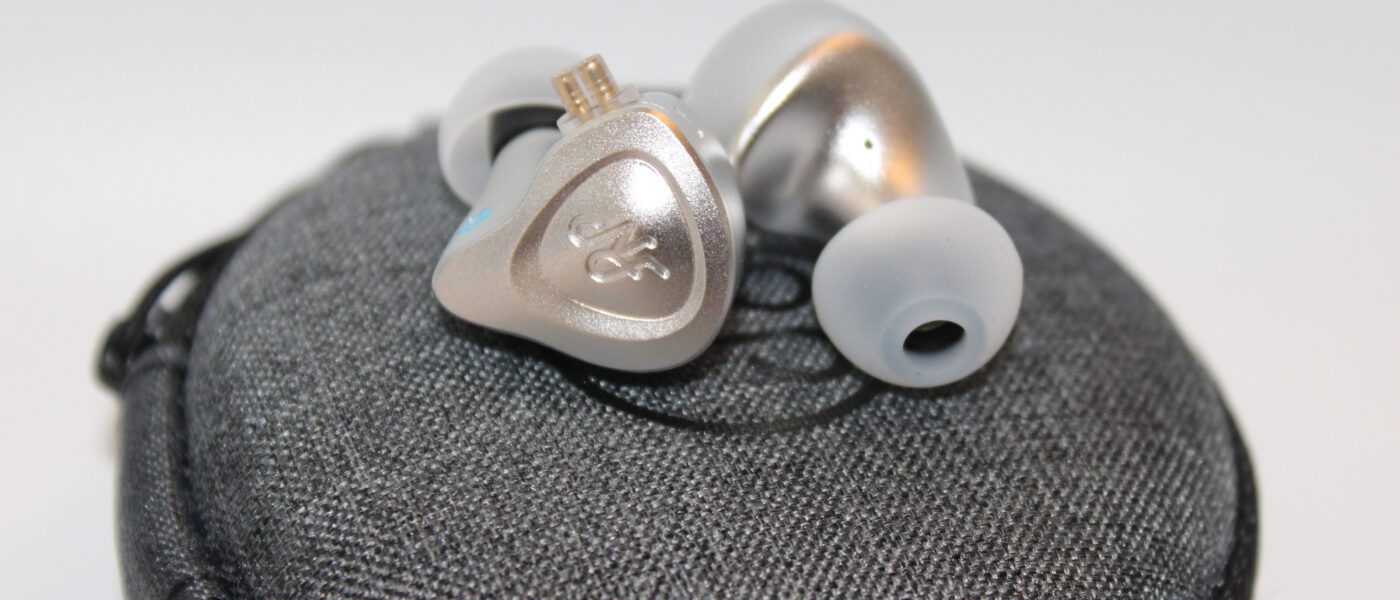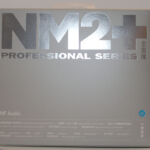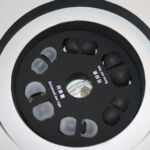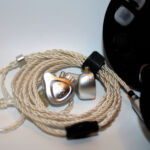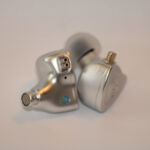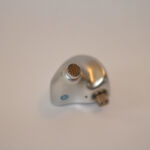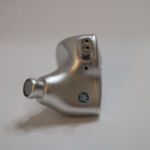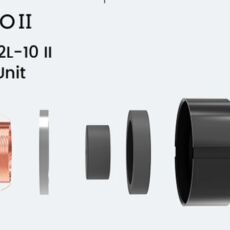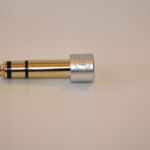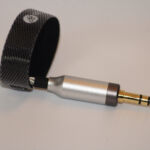NF Audio NM2+
disclaimer: NF Audio approached me about reviewing their current lineup recently and I agreed. They sent me the NA2 and NM2+ models for review. I have no financial interest in NF Audio, nor have I received any directions or guidance for this review. I have received no compensation beyond the product for this review. If you have an interest in NF Audio, check out their website and Facebook Page. To purchase NF Audio products, see Aoshida Audio.
Unboxing / Packaging:
The packaging on the NF Audio models is well laid out with the outer box having the picture and name on the front and specs on the reverse. When the inner box is pulled out it is a bookfold design with the manual and case on one side and the earpieces, tips, and cable on the other all neatly tucked into compartments that prevent things from falling out when opened. The provided kit is fairly complete with earpieces, cable, 6.3mm adapter, case, and six (6) sets of silicone eartips. Tips are two (2) styles in three (3) different sizes S,M,L. The cable does have a velcro tie as well as the clamshell case having a second compartment for tips and adapters. The case is large enough to hold the earpieces with cable attached but not large enough to also carry very many accessories so diligence is needed when selecting what else to carry with the earphones. At the price point of the NM2+ I would have liked to see a case with a bit more room for carrying extra tips or an additional cable as well as the inclusion of some foams.
Build/Fit:
The NM2 has a very familiar shape with its inverted teardrop style but instead of the common resin construction is entirely made of aircraft grade aluminum and rather than investment casting the shell and then using a mill to clean it up, these are milled from bar stock to eliminate the possibility of gaps or air pockets in the shell. Shape is the same as the NA2 and NM2 models with the inverted tear and extended nozzle (in this case with a CNC machined lip for tip retention). Face plates are CNC milled aluminum as well and are well fitted to the inner shell with no excess glue or gaps and a good final polish to smooth the edge between the two. Size is small to mid, but nozzles are fairly pronounced to allow for deeper seating. A vent on the inner surface is centered over the middle of the dynamic driver and sits at about the 2 o’clock position behind the nozzle while another sits immediately in front of the QDC style connector. Connectors are the raised bi-pin with rounded housing and are well fitted to the metal shell with no gaps, play, or cant. Comfort was good for extended wear due to the moderate size and isolation is average or slightly better due to the fit of the body of the iem in the ear and the depth of the nozzles.
Internals:
The NM Series all are based on dual magnet dynamic drivers with dual cavity design. In the NM2+, the driver is listed as the MC2L-10ii and seems to be revision 2 of the driver originally used in the NA2 and NM2. NF appears to either manufacture the driver in-house or have a very tight relationship with the supplier as generation time is short and they have continually improved the original design. The NM2+ integrates the tuning elements (cap/resistors) into the housing on the driver as seen below (red and tan bars). The driver has a dual cavity design to match damping pressure on the driver to the housing and venting used. Magnets are neodymium iron boron and provide over 1 Tesla of flux while the diaphragm is a 5 micrometer polymer composite for lightweight and speed. Polymer composite is not as rigid as Be, Ti coated, or even carbon nano-tubes, but it is lighter weight and potentially faster than all of them. NF chose the material to improve transient response beyond what is possible with the super still coatings. The end result is a driver with a nominal impedance of 18Ω and a sensitivity of 108 dB/mW making it easy to drive well with most sources. I found the NM2+ did well when paired to phones and tablets but scaled quite well with higher quality sources.
Cable:
The provided cable is listed as 5N silver coated OFC in a clear sleeve. The jack is a 3.5mm in a straight metal housing with one flat side for gripping. The NF Audio name is printed in the flat in white on the brushed silver background. A matching 6.3mm adapter is also provided which is a nice touch as many will be used with desktop sources. The cable itself is a 4 wire double twist from jack to coin-sytle splitter. The splitter is black plastic and matches the cable while the chin slider is brushed aluminum and matches the jack. Above the split, wires are 2 wire braids with pre-formed hooks and QDC style hooded bi-pin .78mm connectors. The earhooks are a bit tight and benefit from a bit of heat from a heat gun and re-shaping to be a bit more relaxed. (If you do this remove the earpieces first to avoid heat damage to the components).
Sound:
Bass:
Sub-bass has a mild elevation with a center at about 7oHz and roll-off not becoming evident until the mid 20Hz range so will please those looking for some rumble. It is well controlled though with some texture and detail and stays away from bloat and boom although at times decay seems slightly exaggerated as it is a bit slower than realistic. This is particularly audible on big timpani hits as they seem to linger. Mid bass drops back from the peak at a very gradual pace with the difference in peak and trough being less than 10dB so mid-bass comes across as mildly forward and brings some warmth to the lower-mids in the process. mid-bass texture is quite good with the same tight control seen in the sub-bass and no tendency to bloom or produce a lot of bleed.
Mids:
Lower mids are well presented with good clarity and detail and male vocals have good emphasis in the mix and cut through the instrumentation well. Guitar growl is better than expected with good clarity and sharpness while retaining good note weight in the process. Strings are well presented too with both good energy and detail and although tonality isn’t perfect, its closer than most at this price point. There is a lift in the upper mids that brings some extra energy to higher voices but oddly does not push female vocals out in front of their male counterparts notably. Here again detail is very good and upper voices are well controlled if a bit energetic. The drawback is that the upper-mid/lower treble push can get a little hot at times and is particularly unforgiving of poorly recorded tracks that lean toward bright anyway as it accentuates it. I found the NM2+ paired well with the Cayin N3pro in tube mode or the Xduoo MT-601/602 where I could use the tube to bring a little warmth in and tone down the bright a touch.
Treble:
Lower treble shares the same plateau with the upper-mids and gives the NM2+ a bright overall tilt as mentioned above. This does bring good detail and life to snare rattle where edges are crisp and detail is quite good, but also may be a bit aggressive for some as cymbals are a touch sharp and highhat can be a bit metallic (clicky). Here again, a warm amp helps tone down the presence a bit. Brilliance on the other hand is stepped back as there is a distinct step back at about 5kHz that keeps the NM2+ from getting strident and harsh. I found that when paired to a warm source or with a touch of EQ I could make the NM2+ very listenable for extended periods but without one of the two it could get fatiguing. There is added energy at about the 10kHz mark that brings back in some top end air and while sparkle is a bit limited, the NM2+ does not sound closed in, in fact stage is really quite good.
Soundstage / Imaging:
Stage is wider than deep but with good height and has a 3d feel if not as big as some. I would liken stage size and shape to the high school auditorium where the seats are twice the width of the stage and only 20 or so rows deep. Seating the orchestra is straight forward thanks to above average clarity and instrument separation. Layering is quite good with the only compression I heard coming when bass tracks got particularly complex and fast and even then it was a mild thickening rather than an all-out bloom. Imaging is also good with positions being well defined in space and movements being fairly easily tracked around the stage.
Thoughts / Conclusion:
NF Audio’s background in CIEMS for musicians shows on the NM2+ as it is made to withstand the rigors of daily use and the signature boasts good tonal accuracy and detail from end to end. Extension is very good at the low end and above average at the top if not quite as exemplary as the low end. The result is a very mild V with accentuation of the sub-bass and upper-mids/lower-treble regions that helps add some energy where needed. The things that detract from the NM2+ are it has only average isolation, and that same emphasis of the upper-mid/lower treble that brings some life to the signature can also become a bit hot depending on source pairing. So while the NM2+ shares a pedigree with NF Audio’s stage monitors, it does not provide the level of isolation needed for that use. The source dependence means the NM2+ is likely to put any imperfection in your signal path on full display and may make for harsh listening with poor source material. When paired with a mildly warm source, the NM2+ rewards the user with a shallow V tuning that proves a monitor designed for reference listening doesn’t have to be boring. When paired with a brighter source, the NM2+ can be a bit strident and analytical in nature and will likely be polarizing as a result. If your sources are capable of adding a bit of warmth (Opus 1S, DTR1, WM1A & BA300 – the NM2+ will offer a great listen. Without the BA300, the WM1A is too cool and can get fatiguing with the NM2+. I think this is why the NM2+ has been a bit polarizing in recent media. It is actually quite good, the issue comes with the fact that it is good enough to show off all that is going on in the audio chain. That’s a good thing and when purchasing an in ear at this price point, the NM2+ deserves strong consideration and careful source matching.
-
Bass - 7.5/107.5/10
-
Mids - 7/107/10
-
Treble - 7/107/10
-
Soundstage - 7.5/107.5/10
-
Imaging - 7.5/107.5/10
Summary
Pros: very solid build, good end to end extension, great tonality, very revealing
Cons: average kit, source dependent (needs warmth), unforgiving

